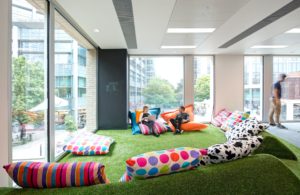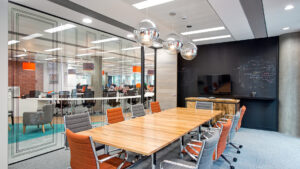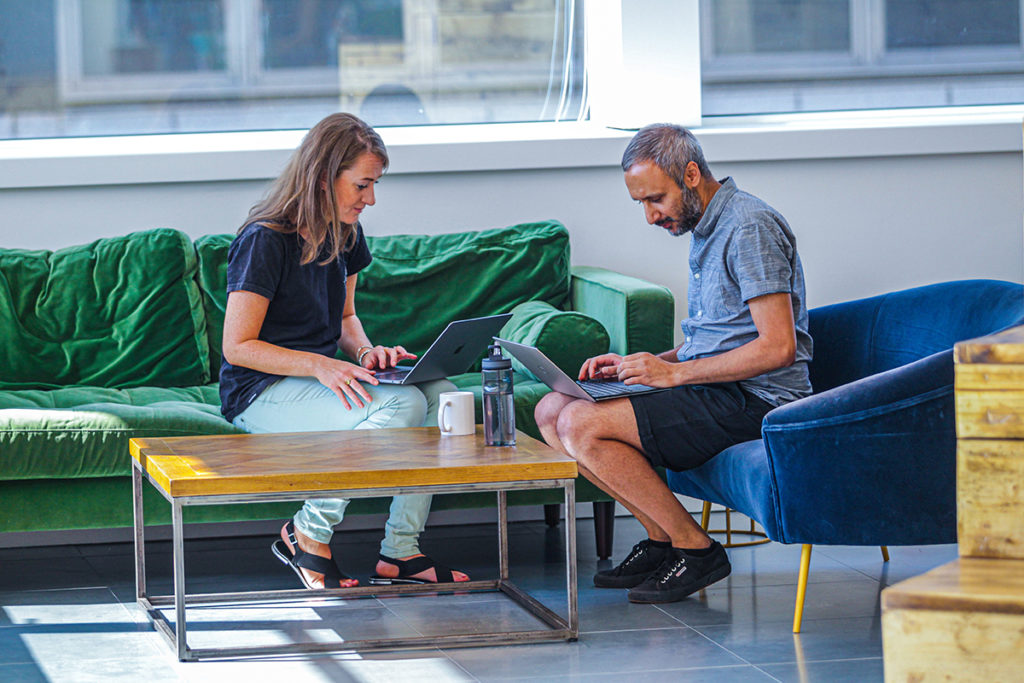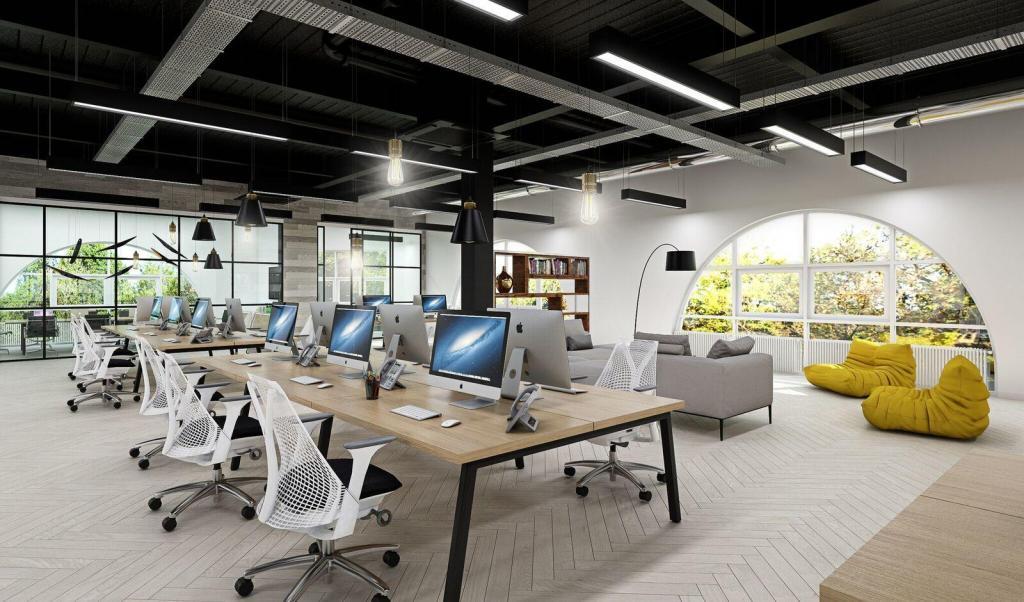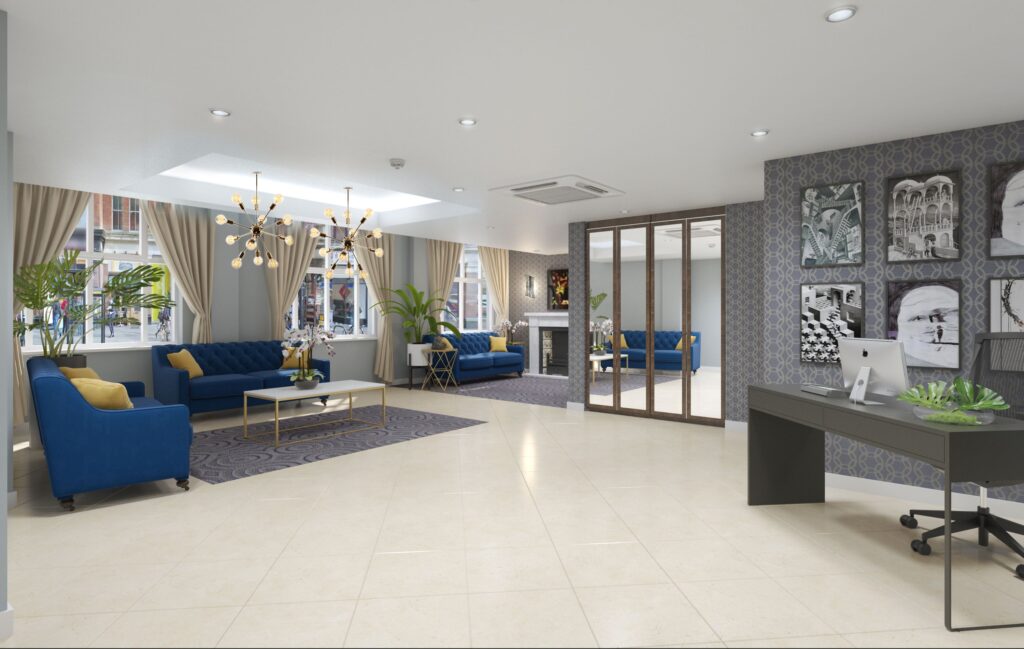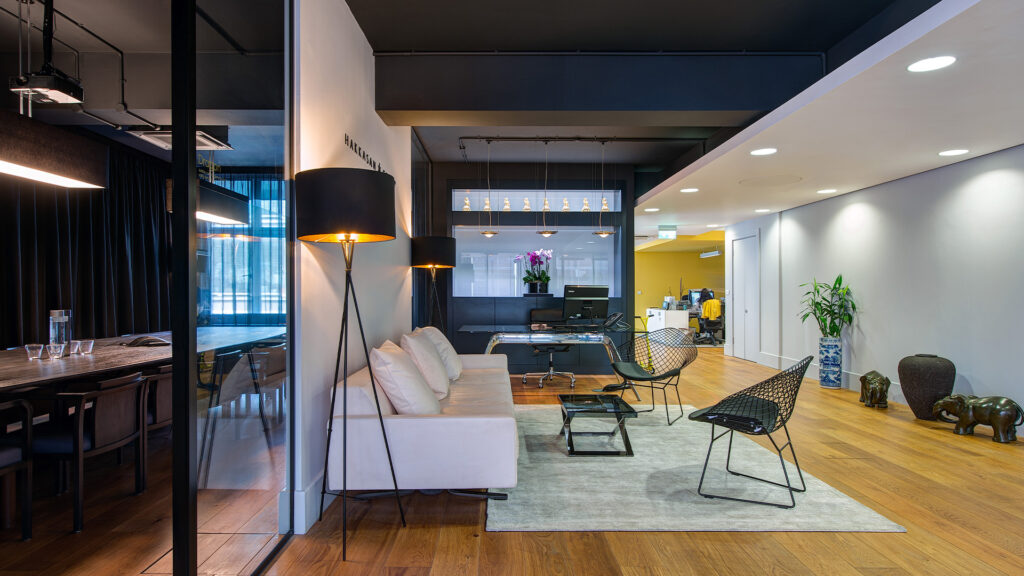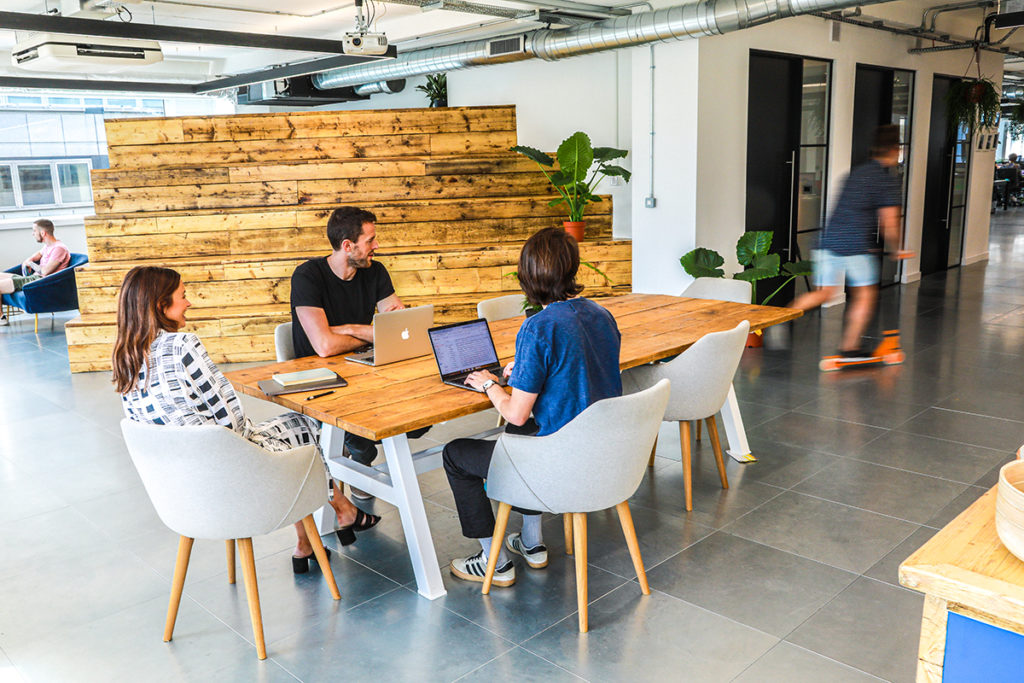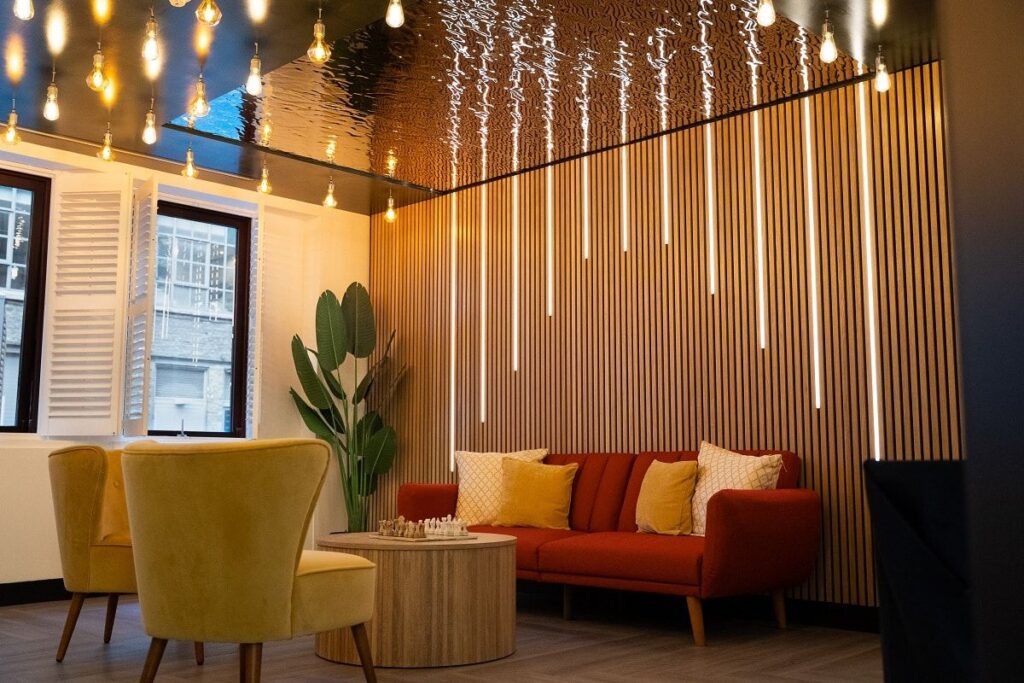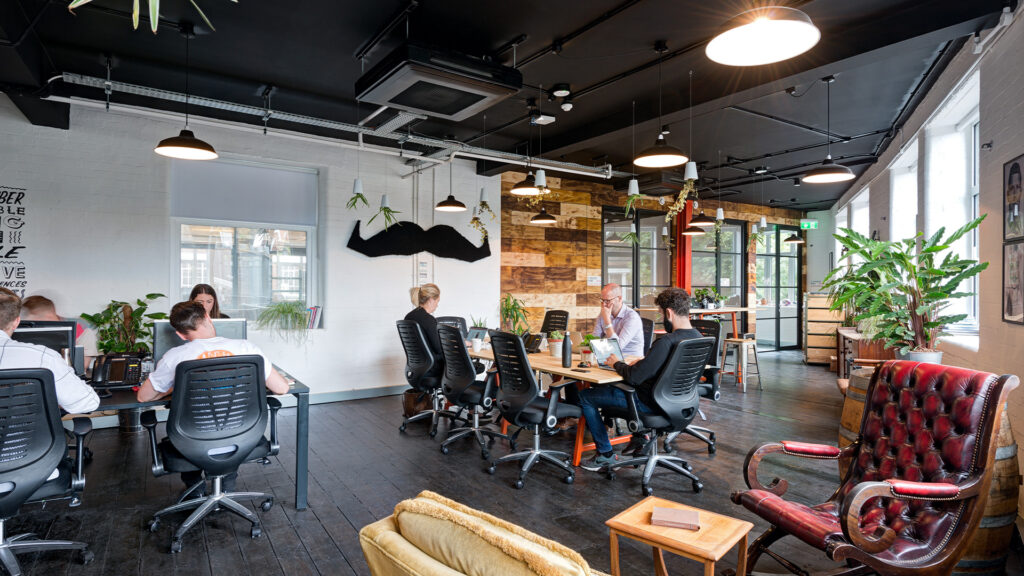A high-performing workplace is not just about aesthetics; it should be designed to encourage efficiency, enhance employee well-being, and adapt to the ever-changing nature of modern work.
The right office interior design elements can make a measurable difference in employee engagement and business outcomes. Companies that prioritise office design see lower absenteeism rates, higher retention, and improved overall workplace satisfaction.
Here’s a closer look at the key design elements that make a workplace truly high-performing.
1. Flexible Workspaces
The rigid office layout is fading as businesses shift towards office interior design that prioritises flexibility. Modern workplaces now incorporate hot desking, breakout areas, and quiet zones, allowing employees to choose where and how they work – ultimately enhancing efficiency.
Hybrid working models are also reshaping office interior design, prompting businesses to invest in multi-functional spaces that seamlessly transition between team meetings, solo work, and social interactions. By embracing flexible layouts, companies can accommodate diverse work styles, improving both employee satisfaction and productivity.
2. Ergonomic Furniture
Musculoskeletal disorders are among the leading causes of work-related ill health, costing businesses millions each year. Investing in ergonomic furniture – such as height-adjustable desks, supportive chairs, and monitor stands – helps reduce strain and discomfort, leading to better posture and productivity.
Businesses are also recognising the importance of movement throughout the workday. Sit-stand desks, active workstations, and even treadmill desks are becoming more common in workplaces that prioritise long-term employee health. By incorporating these features, companies can help prevent repetitive strain injuries and increase overall workplace wellness.
3. Natural Light & Biophilic Design
Poor lighting in the workplace is linked to eye strain, headaches, and reduced concentration levels. When possible, it’s always advised to allow access to natural light.
Beyond lighting, biophilic design – which incorporates natural elements like plants, wood, and water features – has been shown to improve employee well-being. Companies that invest in green spaces often see improved focus and reduced absenteeism.
Incorporating nature-inspired elements into the office environment can also lead to higher creativity and innovation. Whether through living walls, indoor gardens, or natural textures in furniture, integrating biophilic design principles enhances employee engagement and satisfaction.
4. Acoustic Control
Workplace noise can be a major distraction, with open-plan offices often being the worst culprits.
Acoustic control measures, such as sound-absorbing panels, designated quiet zones, and enclosed meeting pods, help create a balanced work environment. A strategic office layout that separates social and quiet areas can further enhance concentration and collaboration.
5. Smart Technology Integration
From automated lighting to AI-powered meeting room booking systems, smart technology is transforming workplaces. The UK is seeing a rise in smart offices where IoT (Internet of Things) solutions are used to optimise lighting, heating, and air quality based on occupancy levels.
Smart office technology also enhances security and sustainability. Sensor-controlled lighting, smart thermostats, and AI-driven workplace management tools help businesses create cost-effective and eco-friendly work environments. With sustainability becoming a greater focus, technology-driven solutions play a crucial role in modern workplace design.
6. Wellness Areas
Employee well-being is becoming a core focus for many organisations. The Health and Safety Executive (HSE) reports that work-related stress, anxiety, and depression account for over half of all sick days.
In response, businesses are introducing wellness areas such as relaxation lounges, meditation rooms, and even nap pods. These spaces provide employees with opportunities to unwind, recharge, and return to work more focused and energised.
Wellness initiatives go beyond designated relaxation spaces. Companies are incorporating fitness areas, mental health support programmes, and even outdoor workspaces to create a holistic approach to employee well-being. By prioritising wellness, businesses can reduce burnout and foster a healthier workforce.
7. Aesthetic & Brand Identity
A workplace should reflect a company’s culture and values. A strong aesthetic and brand identity within office design not only enhances visual appeal but also fosters a sense of belonging among employees.
Google’s London headquarters, for example, incorporates vibrant, themed rooms inspired by British culture, while other businesses use custom artwork, brand colours, and motivational messages to reinforce their company ethos. A visually engaging workspace can inspire creativity and strengthen team cohesion.
A workplace that aligns with a company’s brand can also improve client perception. A well-designed office not only enhances employee experience but also serves as a powerful marketing tool, making a strong impression on visitors and potential clients.
8. Sustainable & Eco-friendly Features
Sustainability is no longer an afterthought in office interior design – it’s a priority. With businesses under increasing pressure to meet carbon reduction targets, eco-conscious office features are becoming essential.
Energy-efficient lighting, recycled materials, and green certifications like BREEAM and WELL Building Standard help companies reduce their environmental footprint while enhancing the workspace.
Beyond energy efficiency, companies are adopting circular economy principles by using sustainable materials, repurposed furniture, and low-carbon office designs. Businesses that commit to environmentally friendly workplaces not only benefit from cost savings but also enhance their reputation among eco-conscious employees and clients.
Office Design Is More Important Thank You Think
With workers increasingly valuing well-being and flexibility, investing in thoughtful office interior design is no longer a luxury – it’s a necessity for business success. Businesses that adopt these design features will not only create healthier and more engaging workspaces but will also gain a competitive advantage in attracting and retaining top talent.


